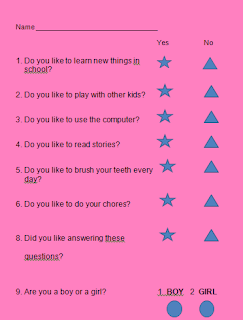Top Ten ProjectThe Top Ten project that was used in a fourth grade classroom amazed me by how much the students how much the students took an interest. It was a exemplary PBL assignment because it helped the students learn and kept them motivated. The first example I saw that met the requirements of an exemplary PBL was Active Exploration. The students gathered facts on animals by using multiple sources such as videos, the internet, and previous knowledge on the subject. The second example I saw was the Academic Rigor. The students developed a new way of thinking. After deciding on the top ten animals, the students all had different ranks for the animals. The class figured out that it was because each group voted for their own animal for a personal preference so the class solved the problem by excluding the groups to vote for their animal. And the third example I saw used in the project that makes this assignment an exemplary PBL was the Applied Learning. The students used high performance organizational skills by working together in groups and as a whole class. The class also used technology in an appropriate way by gathering information and for collecting and gathering others' opinions by creating wiki page for public use.
4th Grade Content Standards for Science/Reading Language Arts met by PBL
Science Content Standards:
SC.O.4.1.04
demonstrate curiosity, initiative and creativity by developing questions that lead to investigations; designing simple experiments; and trusting observations of discoveries when trying new tasks and skills.
SC.O.4.1.05
recognize that developing solutions to problems requires persistence, flexibility, open-mindedness, and alertness for the unexpected.
SC.O.4.1.06
support statements with facts found through research from various sources, including technology.
SC.O.4.1.07
use scientific instruments, technology and everyday materials to investigate the natural world.
SC.0.4.2.01
describe the different characteristics of plants and animals, which help them to survive in different niches and environments.
SC.0.4.2.02
associate the behaviors of living organisms to external and internal influences (e.g., hunger, climate, or seasons).
SC.0.4.2.03
identify and classify variations in structures of living things including their systems and explain their functions (e.g., skeletons, teeth, plant needles, or leaves).
SC.0.4.3.04
given a set of objects, group or order the objects according to an established scheme.
SC.0.4.3.06
identify and explain a simple problem or task to be completed; identify a specific solution; and list task requirements.
SC.0.4.3.09
listen to and be tolerant of different viewpoints by engaging in collaborative activities and modifying ideas when new and valid information is presented from a variety of resources.
Reading and Language Arts Content Standards:
RLA.O.4.1.13
judge the reliability or logic of informational texts.
RLA.O.4.1.14
select and use a variety of sources to gather information (e.g., dictionaries, encyclopedias, newspapers, informational texts, electronic resources).
RLA.O.4.1.15
use graphic organizers and visualization techniques to interpret information (e.g., charts, graphs, diagrams, non-verbal symbols).
RLA.O.4.1.16
use reading skills and strategies to understand a variety of information resources to support literacy learning (e.g., written directions, captions, electronic resources, labels, information texts).
RLA.O.4.1.17
increase the amount of independent reading to build background knowledge, expand vocabulary and comprehend literary and informational text.
RLA.O.4.2.06
write to persuade using order of importance, classifying differences and similarities, classifying advantages and disadvantages.
RLA.O.4.2.07
develop a composition that demonstrates an awareness of the intended audience using appropriate language, content and form.
RLA.O.4.2.08
create an effective response to a task in form, content and language (e.g., letters, poems, brief reports or descriptions, instructions, journals).
RLA.O.4.2.09
use editing strategies to correct errors in sentence structure (fragments and run-on sentences), capitalization, punctuation and gammar.
RLA.O.4.2.12
use strategies to gather and record information for research topics:
• note taking
• summarizing
• paraphrasing
• describing in narrative form
• gathering information from direct quotes, maps, charts, graphs and tables
RLA.O.4.2.13
select and use a variety of sources to gather information (e.g., dictionaries, encyclopedias, newspapers, informational texts, electronic resources).
RLA.O.4.2.14
use strategies to compile information into written reports or summaries (e.g., incorporate notes into a finished product, include simple facts-details-explanations-examples, draw conclusions from relationships and patterns that emerge from data of different sources, use appropriate visual aids and media).
RLA.O.4.2.15
critically evaluate own and others’ written compositions.




